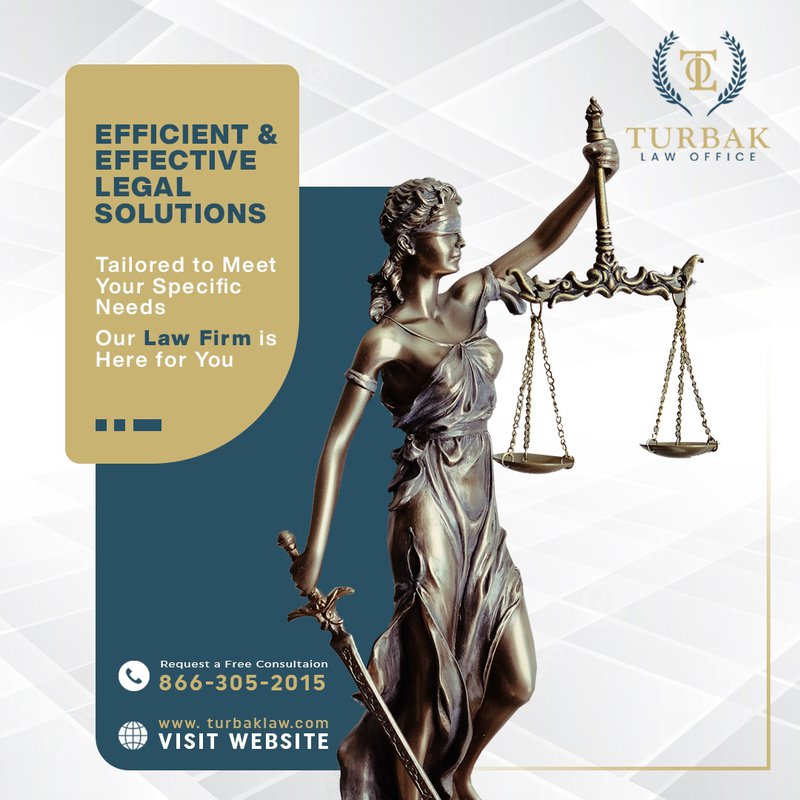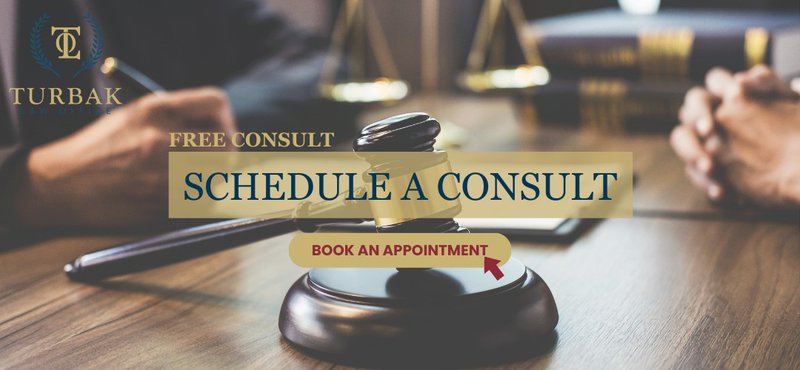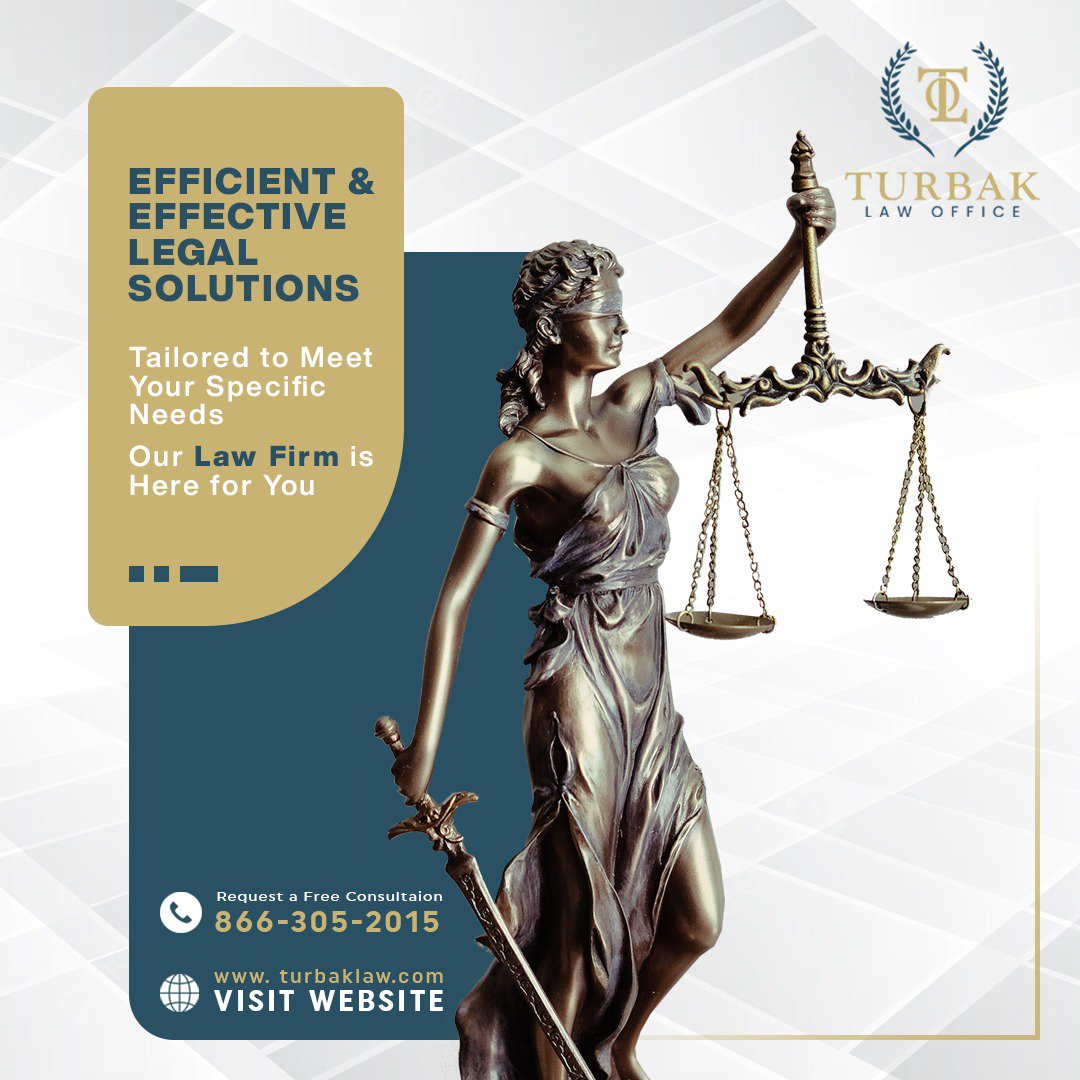Dealing with the aftermath of a personal injury can be overwhelming. From coping with pain to navigating complex legal procedures for compensation, the process can feel exhausting. Fortunately, Turbak Law is here to help.
In this post, we will guide you through the essential steps to take after experiencing a personal injury in South Dakota.

Step 1: Seek Medical Attention
Even if your injuries seem minor, seeking immediate medical care is crucial. Sometimes, injuries can have delayed symptoms or underlying complications that are not immediately apparent. For this reason, it’s essential that you allow healthcare professionals to evaluate your injuries and identify any hidden issues as soon as possible after the incident. Early intervention can also prevent further complications and facilitate a more effective recovery.
From a legal standpoint, consulting a healthcare professional right away helps establish a clear connection between your injury and the incident. Insurance companies and lawyers will scrutinize the choice to delay medical care, potentially undermining your compensation claim. Quickly addressing your injuries will bolster the credibility of your case.
The Importance of Documenting Your Injuries and Obtaining Medical Records and Reports
Medical records and reports are crucial in legal proceedings and insurance claims because they are evidence of the nature and extent of the harm you have suffered.
Therefore, it’s crucial that your healthcare provider thoroughly documents your injuries and any relevant medical findings to create a detailed record of your diagnosis, treatment, and prognosis. During the examination, be sure to accurately describe the circumstances of the incident, as this contributes to comprehensive documentation of the incident and is the first step toward building a strong case.
After the examination, be sure and adhere to the prescribed treatment plan and attend all follow-up appointments, as this demonstrates your commitment to your recovery and helps validate your claim.
Obtaining copies of your medical records and reports is crucial because they are tangible evidence of the harm you have suffered and provide valuable information for attorneys, insurance companies, and other parties involved in your personal injury claim. Keep these records organized and easily accessible for future reference.
Step 2: Document the Incident
Besides seeking medical attention and documenting your injuries, you must also gather and preserve evidence related to the accident or incident that caused you harm. Memories can fade over time, but having a comprehensive record ensures that important information is not lost.
Write down the date, time, and location of the incident and any factors that may have contributed to it, such as weather conditions or other hazards. Include the names and contact information of any witnesses who observed the event.
It’s essential to provide a clear and accurate account of everything that transpired because these details help reconstruct the sequence of events and determine liability—the more precise and comprehensive your documentation, the stronger your case.
Take Pictures
Photographic evidence is especially compelling in personal injury cases. It can demonstrate the severity of the accident, the extent of the property damage it caused, and the visible impact it had on your physical well-being. Photographs can also help establish a direct connection between the incident and your injuries, leaving little room for dispute.
Take pictures of the accident scene, including any hazardous conditions, property damage, or factors that may have contributed to the incident, as well as any injuries you sustained. Make sure the photographs are clear, well-lit, and capture relevant details, and be sure to date them and provide context to enhance their evidentiary value.
Preserve Physical Evidence
Preserving physical evidence connected to the accident is vital for your personal injury claim because it helps establish negligence or liability on the part of a manufacturer or other responsible party.
If a defective product is involved in the incident, such as a malfunctioning device or faulty piece of equipment, store it securely and refrain from attempting any repairs or modifications.
Similarly, if the accident happened because of hazardous conditions, such as a slippery floor or inadequate signage, preserve any relevant evidence. This can include damaged personal items like torn or stained clothing from a fall. Such evidence can help demonstrate negligence and strengthen your claim.
Finally, save any written or electronic correspondence related to your injury, including emails, letters, and text messages with insurance companies, employers, healthcare providers, or other relevant parties. They can be valuable in establishing a timeline, documenting interactions, and supporting your claims.
Keep a Detailed Expense Record
Maintaining a detailed record of expenses helps to demonstrate the financial impact your injury has had on your life. This record should include things like:
- Medical Costs: Document all medical expenses, including consultations, surgeries, medications, therapies, and any assistive devices you require. Include receipts, invoices, and explanations of benefits (EOBs) received from insurance companies.
- Lost Wages: If your injury has caused you to miss work and resulted in a loss of income, keep a record of the days or hours missed, along with corresponding documentation from your employer, such as payroll records or a statement verifying your lost wages.
- Other Expenses: Include any additional expenses directly related to your injury, such as transportation costs for medical appointments, necessary home modifications, or childcare expenses incurred as a result of your injury.
Step 3: Report the Incident
Without reporting the incident, all the effort you have put into documenting and preserving evidence becomes meaningless.
Reporting the incident to the authorities or property owner ensures it’s officially documented and helps establish your claim while providing a basis for further investigation if any is needed. It also helps protect the rights and safety of others who might be at risk.
The Importance of Obtaining Incident Reports or Filing a Police Report
If law enforcement responds to the incident, such as in the case of a farming truck accident, make sure that a police report is filed. It’s also essential to obtain a copy of the report, as it typically contains vital information such as the responding officer's observations, statements from the other parties involved, and any citations issued.
Retaining a copy of the incident report from law enforcement or the property owner strengthens your position when pursuing a personal injury claim.
Step 4: Gather Witness Information
Eyewitness testimony holds substantial weight in personal injury cases as it provides firsthand accounts of the incident. Witnesses can offer unbiased perspectives, corroborate your version of events, and provide valuable insight into the circumstances surrounding your injury. Their testimony can strengthen your case by providing additional evidence and lending credibility to your claims.
How to Collect Contact Information from Witnesses
When an accident or incident occurs, it’s essential to gather contact information from any potential witnesses present at the scene. Follow these steps to collect accurate and valuable information:
- Approach witnesses calmly and respectfully: Address potential witnesses courteously and explain that you were involved in the incident and would greatly appreciate their cooperation in providing a statement.
- Gather contact details: Collect the full name, phone number, email address, and, if possible, the residential or mailing address of each witness. This information will enable you or your legal representative to contact them later if necessary.
- Ask for a brief description: Politely request that each witness provide a concise account of what they observed. Encourage them to be as specific as possible about what they saw, including the sequence of events, the actions of the individuals involved, and anything else they noticed that might be relevant.
Remember, witness statements are most effective when gathered as soon as possible after the incident while memories are still fresh. Delayed collection may lead to potential inconsistencies or fading recollections, reducing their evidentiary value.
When gathering information from witnesses, encourage them to be as specific and detailed as possible. Record their statements in writing or, with their consent, capture them through audio or video recordings. These statements can serve as compelling evidence in negotiations with insurance companies or during court proceedings.
Step 5: Consult with a Personal Injury Attorney
Consulting with a personal injury attorney offers several benefits that can significantly impact the outcome of your case. Here are some key advantages:
Legal Knowledge & Experience
Successfully navigating a personal injury in South Dakota requires an attorney with extensive knowledge of the state's laws and regulations. An experienced attorney can provide you with valuable guidance on your rights, potential legal avenues, and the proper steps to take to seek justice.
Case Evaluation
An attorney can evaluate the merits of your case, assess the strength of your claim, and estimate the potential value of your compensation. This evaluation will help you make informed decisions when it comes to settlement offers and the pursuit of legal action.
Negotiation and Representation
Insurance companies may seem friendly initially, but they will often try to minimize your claim or deny liability entirely. By speaking with an attorney first, you can protect your interests and avoid any potential pitfalls. For example, your attorney will ensure you don’t inadvertently make any statements that could be used against you later.
Attorneys are also skilled negotiators who can engage with insurance companies and other parties on your behalf. They work to secure fair compensation for your injuries, losses, and ongoing medical expenses, and if a settlement cannot be reached, they will represent you in court proceedings.
Your Personal Injury Deserves a Prompt and Efficient Resolution
We understand the physical, emotional, and financial hardships that can arise from accidents and injuries. At Turbak Law, our goal is to build a strong attorney–client relationship based on trust and understanding. That's why we offer a free consultation to give you an opportunity to meet our team and discuss your case.
During the free consultation, our team will take the time to listen to your questions and provide you with clear, straightforward answers. We believe in open communication and will keep you informed at every step of your legal journey.
Our firm’s proven track record demonstrates our consistent success in representing clients in various personal injury claims. Whether you have suffered injuries from a car accident, slip and fall incident, workplace mishap, or any other form of negligence, we have the knowledge, skills, and resources to fight for the compensation you deserve.
A Personal Injury Attorney in South Dakota That’s on Your Side
Dealing with the aftermath of a personal injury can be incredibly challenging, but taking the right steps will make all the difference in securing the compensation you deserve. By acting swiftly, gathering evidence, and seeking professional guidance, you can protect your rights and work towards a successful resolution to your case.
Contact us today about your personal injury in South Dakota and let us advocate for your rights and help you achieve a full recovery.


I find it fascinating that consulting a legal expert could help you get compensated for your injuries. I have a colleague who was involved in a bicycle accident that injured his leg. I believe this can convince him to seek legal representation if the injury is serious enough to affect his ability to work.
I love that you said that a consultation would be provided to gather information and ideas for your legal approach. My friend informed me yesterday that his cousin was asking how he could file a compensation claim as he was injured in their employee warehouse because of a machine malfunction. He asked if I had thoughts on the best legal approach. I appreciate this helpful legal guide article for the best legal approach. I’ll tell him it will be much better if he consults a trusted work accident injury attorney as they can help him with the proper compensation.